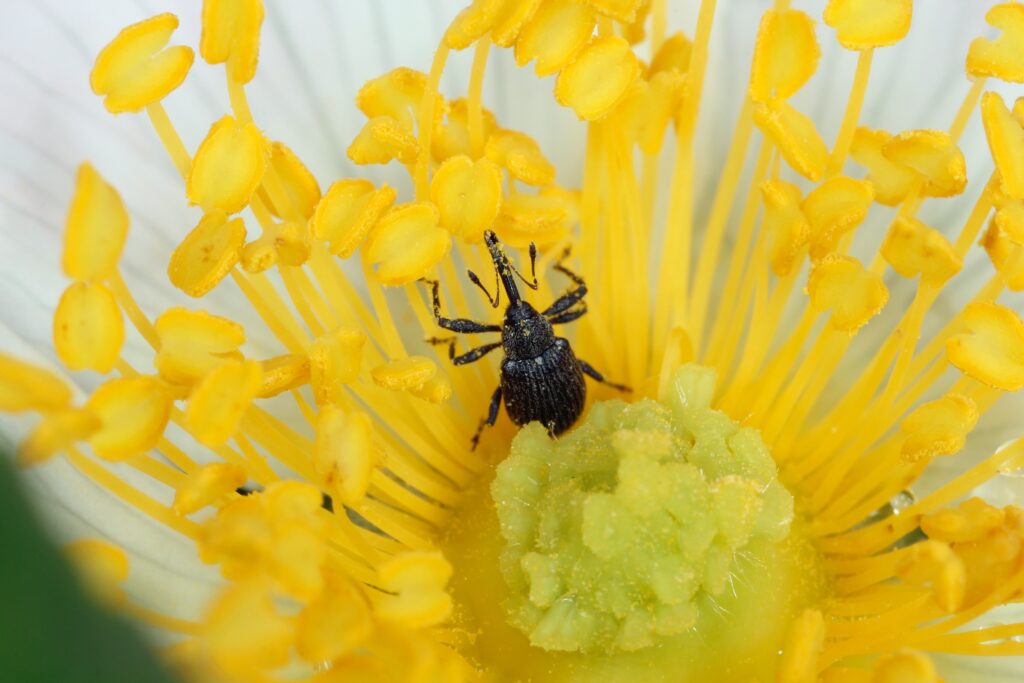
News
New phytosanitary certificate requirements for Fragaria, Rosa and Rubus headed to the U.S.
September 9, 2021 By Greenhouse Canada
 Image: Adobe Stock
Image: Adobe Stock Starting Sept. 14, 2021, exports of Fragaria spp., Rosa spp. and Rubus spp. from Canada into the U.S. will require a phytosanitary certificate with an additional declaration.
This was announced by the United States Department of Agriculture’s Animal and Plant Health Inspection Service (USDA-APHIS) Sept 7., as noted in Federal Order DA-2021-25, to prevent the introduction of strawberry blossom weevil (Anthonomus rubi) into the U.S.
According to the Canadian Food Inspection Agency (CFIA), an additional declaration is required for export of these plants, indicating:
“The plants have been produced and certified by the National Plant Protection Organization (NPPO) of Canada as a pest-free place of production or a pest free production site for the strawberry blossom weevil (Anthonomus rubi) following the requirements of the International Standards for Phytosanitary Measures-10. The shipment has been inspected and found to be free of the strawberry blossom weevil (Anthonomus rubi).”
“Further information on the requirements to meet the additional declaration for a pest free place of production and pest free production site will be available soon,” notes the CFIA. Once a pest module for Anthonomus rubi has been implemented, Fragaria spp. and Rosa spp. plants for planting may be shipped under the United States-Canada Greenhouse Grown Plant Certification Program (GCP), the Greenhouse Certification Program for Export of Greenhouse-grown plants to the United States (CGCP) and the Canadian Nursery Certification Program (CNCP).
For more information, producers are asked to contact their local CFIA office.
According to the USDA, “Strawberry blossom weevil is a serious pest of strawberry (Fragaria spp.) and raspberry (Rubus spp.). Blackberry (Rubus spp.) and rose (Rosa spp.) are considered occasional hosts. When imported as plants for planting these hosts represent a pathway for the entry of this pest into the United States. The Canadian Food Inspection Agency (CFIA) reported strawberry blossom weevil populations being detected in British Columbia, Canada. This detection is the first confirmed report of this pest in North America.”
“The strawberry blossom weevil females lay eggs in unopened flower buds of their hosts. The female will then chew through the stem just below the bud, and the bud will drop from the plant. Eggs, larvae, and pupae are found inside closed flower buds of host plants. The larvae feed and develop in the “clipped” bud, which will reduce the total number of viable buds on the plant. The lost bud will not be able to produce a fruit once clipped. In Europe, this pest has caused up to 80% loss of the berry crop. ”
With files from: CFIA, USDA-APHIS
MISE À JOUR : L’Arrêté fédéral DA-2021-25 du USDA-APHIS modifie les conditions d’entrée pour l’importation de plantes de Fragaria spp., Rosa spp. et Rubus spp. du Canada vers les États-Unis à compter du 14 septembre 2021.
Le 7 septembre 2021, l’Animal and Plant Health Inspection Service du Département de l’Agriculture des États-Unis (USDA-APHIS) a publié l’Arrêté fédéral DA-2021-25 visant à prévenir l’introduction de l’anthonome du fraisier (Anthonomus rubi) aux États-Unis.
L’Arrêté fédéral vise toutes les exportations de végétaux destinés à la plantation de Fragaria spp., Rosa spp. et Rubus spp. produits au Canada
À partir du 14 septembre 2021, un certificat phytosanitaire portant la déclaration supplémentaire suivante sera requis pour l’exportation de ces plantes :
« The plants have been produced and certified by the National Plant Protection Organization (NPPO) of Canada as a pest-free place of production or a pest free production site for the strawberry blossom weevil (Anthonomus rubi) following the requirements of the International Standards for Phytosanitary Measures-10. The shipment has been inspected and found to be free of the strawberry blossom weevil (Anthonomus rubi). »
De plus amples informations suivront quant aux exigences à rencontrer pour satisfaire la déclaration supplémentaire d’un lieu de production exempt d’organismes nuisibles ou site de production exempt d’organismes nuisibles.
Les végétaux destinés à la plantation de Fragaria spp. et Rosa spp. peuvent être expédiés sous le Programme États-Unis – Canada de certification des végétaux cultivés en serre (GCP), le Programme canadien de certification des serres (PCCS), et le Programme canadien de certification des pépinières (PCCP), lorsqu’un module de lutte antiparasitaire pour Anthonomus rubi aura été mis en œuvre.
Pour plus d’information, veuillez contacter votre bureau local de l’ACIA.
Print this page